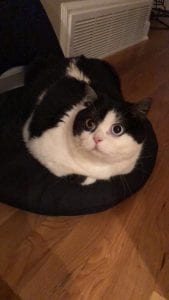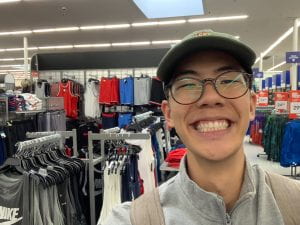This time tomorrow, I will be in Belize. That’s pretty wild, but to be honest it really hasn’t hit me yet. I have been putting so much of my time and thought into preparing for the trip that I haven’t had time to really think about what an exciting and fun experience it’s going to be.
As far as expectations go, I sure hope that the course itself will be less stressful than the time leading up to it has been. I am really excited to get to spend a lot of time on the reef, and I am expecting that I will be able to appreciate it much more than any other snorkel trip I’ve been on. While I’ve visited reefs several times before, I never have been able to experience one through the eyes of being a tropical field biologist! I’m especially excited because I learned so much about reefs in the Coral Reef Ecosystems class this past semester. I’m expecting to see a lot of things that I won’t recognize initially, but I hope by the end of the week on the reef I’ll have a much better idea of what I’m looking at.
In the rain forest, I expect to learn a lot. I’m expecting the days there (and the days on the reef too, I’m sure) to be extremely tiring, so I’m hoping I don’t have any gear issues that make things at all more difficult. I think the last time I was in a rain forest I hadn’t realized that I was blind yet, so I couldn’t see anything. I still don’t have the best eye for detail, but now that I wear contacts I can actually see and I’m hoping I’ll be able to notice things hiding in the trees or underbrush (especially snakes!!)
What I’m hoping to learn from this course is what it’s like to be a field biologist because that’s something I’ve always wanted to do. I’m also excited to learn about the intricacies of the rain forest and the coral reef, two of the world’s most amazing and threatened ecosystems. In preparing for this course, I took Dr. Correa’s class ‘Coral Reef Ecosystems.’ I’m really hoping I’ll be able to apply what I learned last semester to the reef we’ll be studying, and that I didn’t forget too much of the course material by this point in the summer. I’ve also taken other basic EBIO courses, and hopefully those prepared me well in terms of field techniques we might use in the rain forest.
I am nervous that I will not be able to spot any Orthoptera species at all. I am also nervous that I’m going to have trouble identifying species, of both Orthoptera and Green Algae. I’m also nervous about having difficulty staying underwater long enough to get anything done. Luckily, I have prior experience with snorkeling so I’m quite comfortable with that, it’s just the time spent underwater where I struggle sometimes. I’m also nervous that I will be ill prepared in some way. I really really hope I did not forget anything important.
I have a little previous experience in the Tropics, but only as a quite young tourist. I visited the Cloud Forest in Costa Rica with my family one time. I’ve also been to Mexico and snorkeled on reefs and in cenotes in the Yucatan more recently.
I am most excited about seeing unique tropical organisms. I want to see some Christmas tree worms, and maybe some Parrotfish on the reef. In the rainforest, it’d be amazing to see a scarlet macaw, a monkey, or a big cat, but I know that probably won’t happen. And as long as they don’t bite me, I’m exciting to see the snake species we saw during our visit to the Houston Zoo Herpetology exhibit. Finally, I’m exciting to grow close to my fellow Tropical Field Biology Classmates. I can’t believe this course is about to start!









